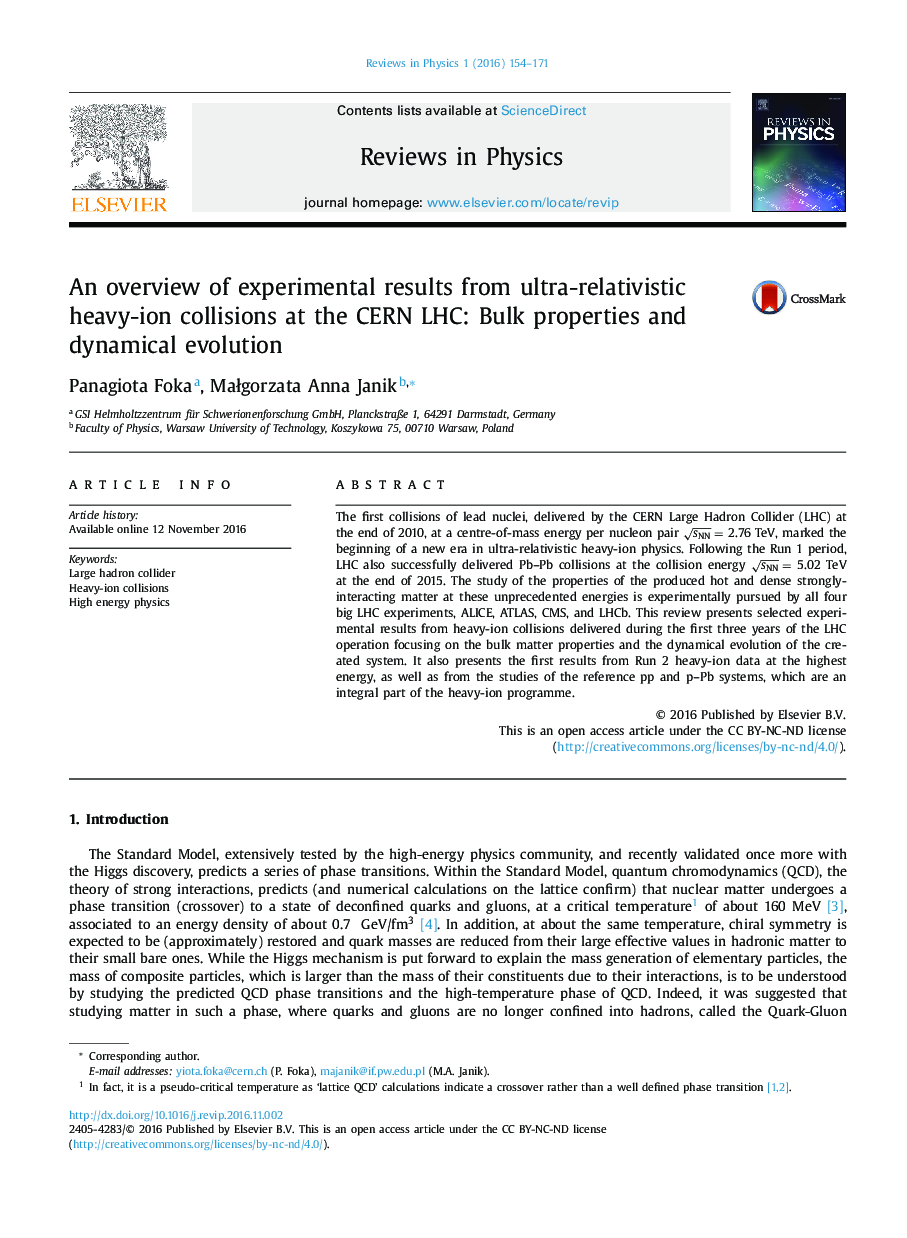| Article ID | Journal | Published Year | Pages | File Type |
|---|---|---|---|---|
| 8165837 | Reviews in Physics | 2016 | 18 Pages |
Abstract
The first collisions of lead nuclei, delivered by the CERN Large Hadron Collider (LHC) at the end of 2010, at a centre-of-mass energy per nucleon pair sNN= 2.76Â TeV, marked the beginning of a new era in ultra-relativistic heavy-ion physics. Following the Run 1 period, LHC also successfully delivered Pb-Pb collisions at the collision energy sNN= 5.02Â TeV at the end of 2015. The study of the properties of the produced hot and dense strongly-interacting matter at these unprecedented energies is experimentally pursued by all four big LHC experiments, ALICE, ATLAS, CMS, and LHCb. This review presents selected experimental results from heavy-ion collisions delivered during the first three years of the LHC operation focusing on the bulk matter properties and the dynamical evolution of the created system. It also presents the first results from Run 2 heavy-ion data at the highest energy, as well as from the studies of the reference pp and p-Pb systems, which are an integral part of the heavy-ion programme.
Related Topics
Physical Sciences and Engineering
Physics and Astronomy
Condensed Matter Physics
Authors
Panagiota Foka, MaÅgorzata Anna Janik,
